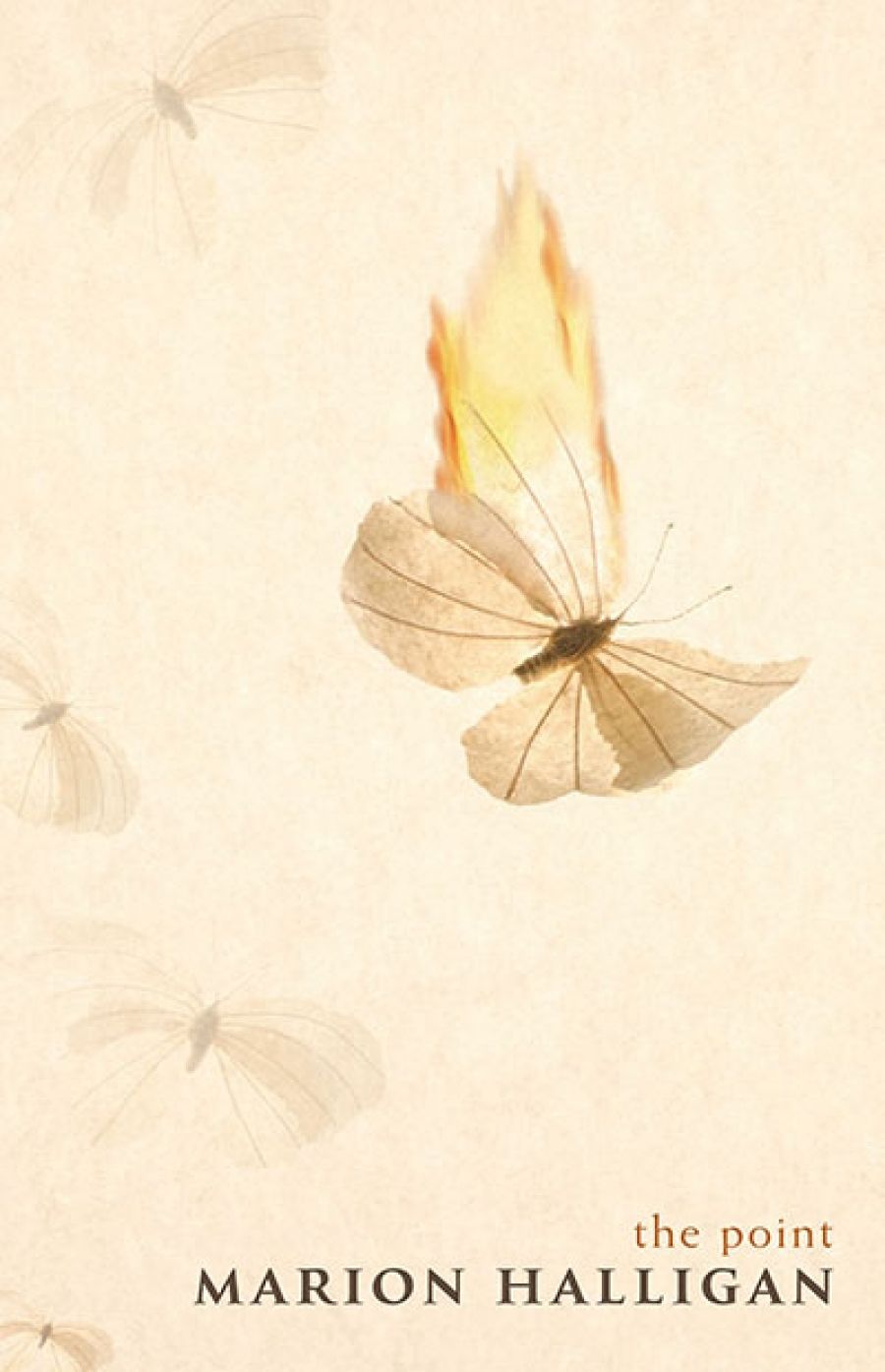
- Free Article: No
- Contents Category: Fiction
- Review Article: Yes
- Article Title: Getting to the Point
- Online Only: No
- Custom Highlight Text:
Marion Halligan’s latest novel should be a success. It is a continuation and concentration of themes, characters, and settings that have consistently engaged her in a considerable body of work. The Point is full of Halligan favourites: food, art, love, literature, hubris, Canberra, Séverac, and the Spensers. It is a novel with currency, exploring the IT industry, the business of food, and the perceived distance between those with and those without. Halligan has a reputation as an intense and original writer, but The Point is a disappointing novel.
- Book 1 Title: The Point
- Book 1 Biblio: Allen & Unwin, $29.95 pb, 336 pp
- Book 1 Readings Link: booktopia.kh4ffx.net/LPd1PV
The eponymous Point is an imagined art deco masterpiece housing Canberra’s best restaurant, its ambience and food lovingly realised. It is the centre of much of the action and an emblem for the novel’s main theme. Halligan has positioned the restaurant as lamp and mirror: ‘It is a glass darkly … From outside it looks like a lantern … Inside are those who possess, and are perhaps themselves possessed. Outside are the dispossessed. The dispossessed see themselves, and the others, the insiders. The others see only themselves.’
Like many of Halligan’s works, The Point is a busy novel. Jerome Glancy is an ex-Franciscan, ‘a bit formal, a bit unexpected’, who owns a rampantly successful IT firm and is preoccupied with ‘finding ways of dealing with infinitude and complication’. He falls in love with Flora Mount, the chef and owner of The Point, who lives on large glasses of white wine, is ‘a waif, but tough, and strong’, and obsessed with simplifying ingredients to create the perfect meal. Flora is a friend of Elinor Spenser, a dictionary-maker who has a lot of lunches and worries about Flora. Oscar Luft is a beautiful young genius-hacker, with ambitions to enter portals of experience through drugs. These are the main possessed characters of The Point. The dispossessed are represented by Clovis and Gwyneth, a Canberran Lear and Cordelia. Clovis – formerly a lawyer, now homeless – is a drinker who receives an allowance from his children to stay away from the family. Gwyneth is young, abused, homeless, on the run, and using methadone. Between these two extremes is a large ensemble of characters who are less possessed, but not fully dispossessed, most of them connected to the restaurant in some way. These characters are worked through a complex plot. The novel is part third-person narrative and part Jerome’s diary, as he reflects on the unfolding events. Halligan is fond of brazen coincidence in fiction, and The Point is no exception. Added to this, quite a few of the characters – Flora, Elinor, Ivan, Blanche, and Marie Claire – come with an existing past and a continuing story from Halligan’s novel Spider Cup (1990).
The first half of The Point introduces the many characters, while Clovis and Gwyneth and Jerome and Flora begin their relationships. The ‘haves’ and ‘have-nots’ are brought together when Clovis saves Jerome from an attempted murder, and Flora hosts a dinner in thanks. From this awkward meal, which is a highlight of the novel, tentative friendships develop between the disparate characters, set against a series of dramatic events: a gang rape, a fatal overdose, and an explosion. In the last chapters, the consequences of hubris and the rewards of modesty are meted out. Those who believed they could attain perfection, be it in food, knowledge, or experience, end up dead or ruined. Those who suffered and served are rewarded with contentment and a rosy, appropriately humble future.
The disappointment of this work is the writing. Jerome is a self-absorbed and facetious character whose reflections aren’t scintillating. As a diary, it carries too much of the narrative, and Jerome, who is ‘old and tired and worn and forgetful’, has an implausibly good memory for long and complex conversations. The dialogue, particularly from the younger characters, is unconvincing. Frequent and frustrating are syntactical muddles such as ‘Jerome hadn’t talked to her since acrimoniously she left him – no, his was the acrimony, she had gone with he thought a vulgar stupid misprising of what love was, but also with a careless sort of taking-and-leaving indifferent good humour that had enraged him.’
Halligan has described herself as enjoying a ‘bowerbird cleverness, a kind of sly sharpness in the collection of matter’, the proud display of which is a regular feature of her novels. Many of the characters in The Point share her bowerbird tendencies, and the novel is laden with exotic words, quotations, descriptions of visual art, and literary and religious characters. Whilst some elucidation is helpful, too often I felt I was reading an idiosyncratic encyclopedia, with entries such as Key West (1. Lime Pie 2. Florida 3. Wallace Stevens), methadone, French dining, pelicans, and St Jerome. These frequent explanations are overt and overly detailed, keeping the reader at arm’s length from the characters and the plot.
Eudora Welty said of writing fiction: ‘You must know all, then not tell it all, or not tell too much at once: simply the right thing at the right moment.’ This authorial confidence, which Halligan demonstrated in The Golden Dress, is lacking in The Point. Too many characters feel guessed at rather than known, and there is a straining to tell too much all at once, rendering Halligan’s latest work worthy, but hard to recommend.


Comments powered by CComment